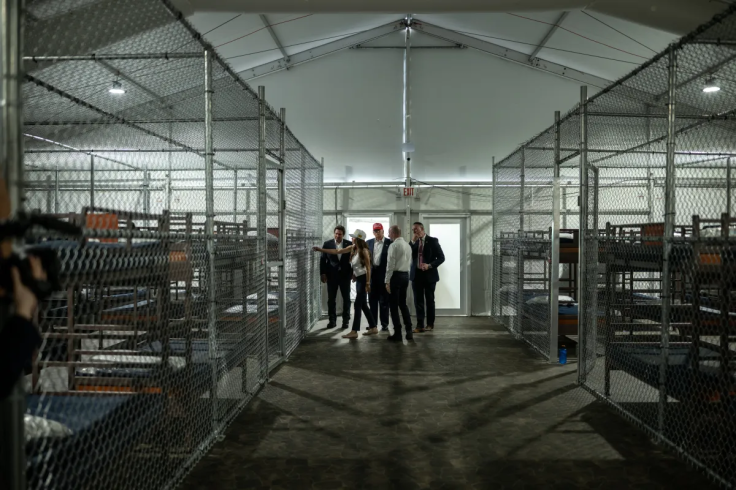
A new report has revealed mounting criticism against the $45 billion plan by U.S. Immigration and Customs Enforcement (ICE) to rapidly expand its detention infrastructure through tent-based facilities, sacrificing everything from safety to sanitation in the process.
"There's a reason no one wants to live in a tent," said Eunice Cho of the ACLU's National Prison Project to the news site, citing numerous logistical failures such as insufficient medical infrastructure and poor sanitation. "They certainly are not weatherproof," she added, "and they do not have the setup to make sure people's medical concerns are addressed."
As Mother Jones points out, prior to 2025, ICE did not use tents for long-term detention. But internal documents obtained by The Wall Street Journal in mid-July revealed that the agency aims to erect thousands of "hardened soft-sided facilities" on military bases and adjacent to brick-and-mortar jails, a strategy the agency says allows for rapid expansion of detention beds. The plan is part of a broader push to increase the number of available detention beds from roughly 40,000 to 100,000 by year's end.
One of the first examples of the tent-detention trend was Florida's "Alligator Alcatraz", a tent camp that was opened in July on an abandoned airstrip in the Everglades and could have the capacity to detain thousands by the end of August.
Despite claims by DHS' Secretary Kristi Noem that conditions at the facility are "extremely high" standard, reports from advocates and former detainees paint a troubling picture which includes reportes of detainees receiving little to no food, lack of basic sanitation and inmates being denied medical attention and legal counseling. "Tents are already leaking and flooding after rainstorms," Cho added, questioning the facility's viability during hurricane season.
Historically, tent detention centers have proven problematic, Mother Jones explained, citing Sheriff Joe Arpaio's "Tent City" in Phoenix as a prime example. Once filled with immigrants, the place was condemned for having them go through extreme temperatures, inadequate shelter, and costly lawsuits totaling over $100 million. More recently, CBP tent facilities in El Paso were found to have unsafe flooring, poor lighting for medical care, and food stored at hazardous temperatures.
Notably, corrections expert David Muhammad told the news site that the U.S. already has surplus jail space that could meet ICE's needs more effectively than tents. "You have tons of existing facilities," he said.
Still, ICE is proceeding with additional tent projects in multiple states, using a mix of federal and state funding. FEMA is gearing up to divert $608 million from its budget for these efforts, which critics argue could shift accountability from the federal government to the states.
© 2025 Latin Times. All rights reserved. Do not reproduce without permission.





